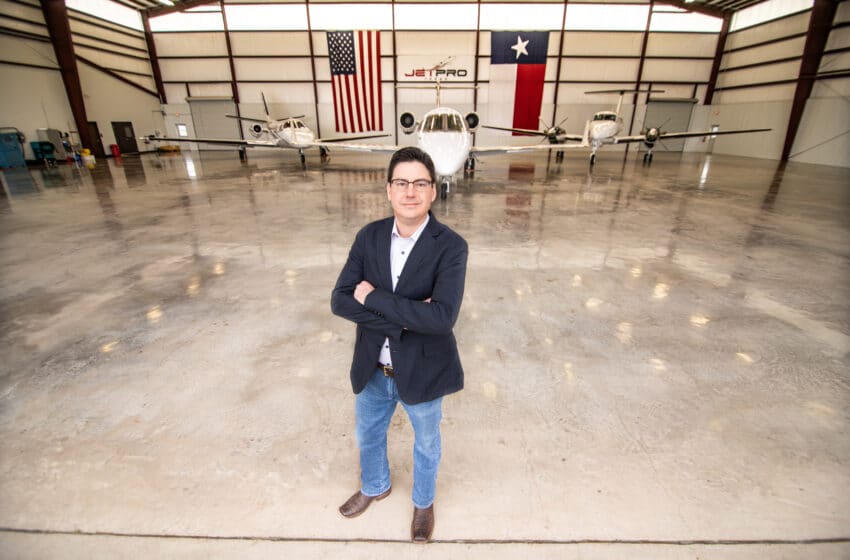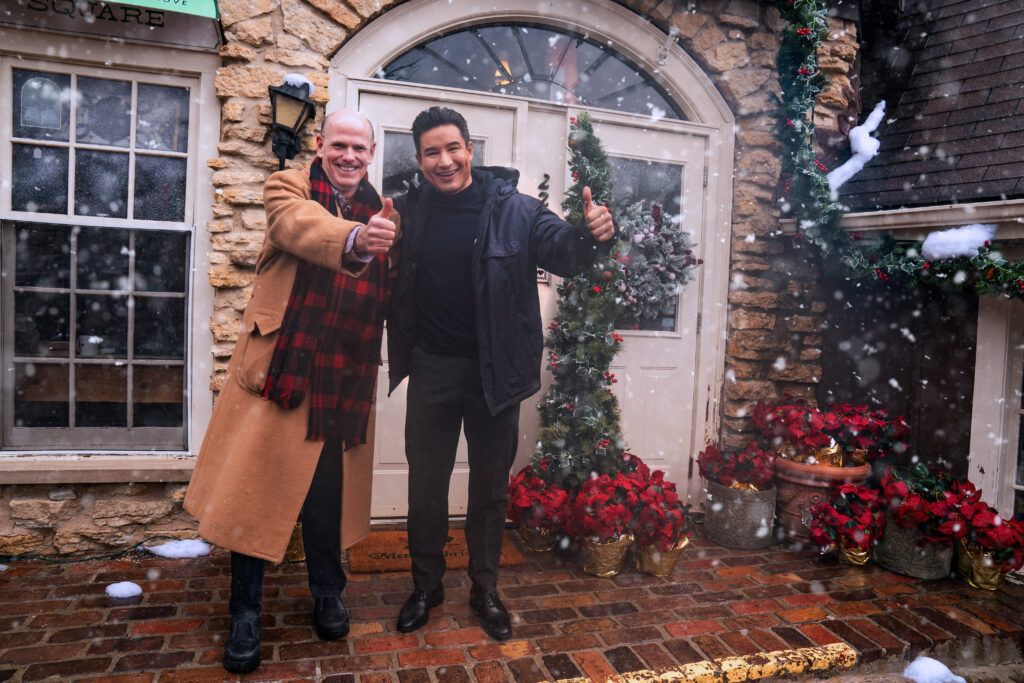How to Fly Private—the Smart Way

A Conversation with Sam Starling, Partner at JetPro Texas
In late 2008, the CEOs of the big three automakers flew from Detroit to Washington. They were on a mission to secure federal funds and prevent the collapse of their industry, but all three made the trip in private jets — a fact that drove an instant frenzy of media outrage. Article after article decried these “fat cats” for hopping around in private aircraft while seeking loans from the government.
For Sam Starling, whose family has been in the aviation business for over half a century, that moment marked a watershed in public opinion on private flight. In the years after 2008, private aircraft became a symbol of elite waste. President Obama himself regularly criticized tax breaks for private jet owners, once mentioning “corporate jets” six times in an hourlong news conference.
But in the past six months, Starling has seen a rapid shift in perceptions. In the fallout of a pandemic, travelers are prioritizing their health — and for many, that means avoiding crammed commercial flights. JetPro Texas, the aviation dealer outside Waco where Starling is a partner, is seeing demand skyrocket. In the light of a global pandemic, private jets are increasingly seen as a way to prioritize health and safety in getting from one place to another.
If you’re an executive who’s interested in jet ownership — whether out of safety, convenience, or business benefit — you probably have some questions: How much does it cost? What should I know going in? Should I lease or buy? In this conversation, Starling explains how executives can avoid costly mistakes as they get into private air travel, and shares some of the latest flight innovations he’s tracking.
Texas CEO Magazine: Tell us a little bit how you got into the business.
Starling: I was born in the business. I say I had no choice. I was born in Kansas, where my dad owned Midwest Piper, a Piper dealer selling against Beechcraft and Cessna. He beat those two out when he sold Pizza Hut their first turbine-powered airplane. He grew up on Edgecliff Terrace in Austin, on the river, and later wanted to get back to Texas, so we moved to Marble Falls and have been around ever since. He owned the FBO at Robert Mueller Airport for some time.
Texas CEO Magazine: Aviation is a highly competitive business. What do you think has made you and JetPro successful in it?
Starling: Depth of knowledge. We’re not just a broker or a pilot; we do it all. I fly. I stay current flying single-pilot on [Cessna] Citations and have 13 other ratings in various jets, all the way up to the [Dassault] Falcon 900 and [Bombardier] Challengers. Our Director of Maintenance came over with Hawker from England. We know our game. Anybody can sell someone an airplane, but it’s the technical aspect that sets good operators apart.
Texas CEO Magazine: What innovations are you excited about coming down the pike in aviation?
Starling: In aviation, innovation moves to application extraordinarily slowly. But we are starting to see some pretty cool stuff. Electric is coming, though it’s still a good way off. I’ve got some friends in the battery industry, and the power is not quite there yet. But I’m excited.
A lot of innovation right now is around safety. Back in the 1960s, everybody had a V-tail Bonanza, also known as the “doctor killer.” We want to stay away from anything like that again in modern business aviation. Garmin came out with an auto-land function. A passenger can actually push the button from the back of the airplane, and the airplane lands at the nearest suitable airport, depending on weather and terrain and everything else. And it talks to air traffic control while it does it. That’s here and it’s certified.
Texas CEO Magazine: The commercial aircraft business has gotten much safer, to the point that we haven’t had a major US domestic crash in several years. It sounds like private aviation is following that curve as well.
Starling: Absolutely. There are always anomaly crashes, unfortunately. Business aviation is by nature extremely safe because we’re risk-averse. We don’t fly airplanes; we fly people.

Texas CEO Magazine: Is having a twin–engine plane as opposed to a single–engine plane a big safety advantage?
Starling: One hundred percent. Our whole industry is redundancy driven. I know that from experience. On my daughter’s eighth birthday, at about 8:30 in the morning, I put a brand-new under-warranty Cessna Caravan in a cornfield about four miles from our airport and wound up making the news, of course. The engine came apart internally. It was a known manufacturer’s defect, but we were within the compliance window. It was a beautiful blue day, and that incident didn’t even get the tires on the airplane dirty. But it really solidified our company’s single-engine operating specifications.
Texas CEO Magazine: How about two pilots versus one?
Starling: Absolutely. We’ve had some clients who make it mandatory that they have two pilots and two engines at all times. The cheapest insurance a CEO or flight department can buy is a second pilot. There’s also a lot of innovation around single-pilot craft, but you have to be careful. I take a special training course every year in the Cessna Citation family to fly two-pilot Citations on a single-pilot waiver from the FAA. And I use it very judiciously. If we’re running an airplane to maintenance or something simple, we’ll run a single pilot. But any time we have passengers, we’re going to weigh our options of operating with two pilots.
Texas CEO Magazine: For many CEOs, time is the most valuable commodity and that leads them to look into private aviation. How should a CEO start thinking about flying private?
Starling: Step one should be to sit down with a reputable aviation professional and have a long and honest conversation about your travel needs and budget. Today, there’s so many different options, with jet cards, charter, and aircraft ownership or partnership. Charter is an entry-level way into private aviation; it costs more per hour, but it’s on-demand. No matter which route you go, I advise people to go sample some aircraft and really think about how you’re going to use the plane. Different airplanes fit different missions.
So, sit down with several people, independent sources if you can find them, and get a good handle on your travel needs and budget expectations. If you’re listening to just the charter broker, he’s going to sell you on charter. If you’re listening to the jet card sales guy, he’s going to sell you a jet card. If you’re listening to the aircraft sales guy, he’s going to sell you an airplane. Aircraft sales is the last unregulated bastion of retail enterprise in America, so you need to seek wise professionals who respect their clients.
If you’re talking to someone and it doesn’t feel right, it’s probably not. And never, never fail to get a second opinion. I take calls like that on a fairly regular basis—”I got your name from so-and-so. Here’s what I’m planning to do, am I okay?” Sometimes the answer is yes. And sometimes the answer is “Let’s sit down and talk.”
Texas CEO Magazine: What are some of the top questions I should ask a professional? What variables go into the decision of charter versus ownership, type of aircraft, and so on?
Starling: The first thing is where you are going, What are your top five or 10 city pairs? Second, how many people are flying, and what are we carrying? Next, frequency. Are we flying three times a month or two times a year? This affects things greatly, depending on your appetite for capital investment versus hourly operating costs. At less than 100 or 150 hours a year, it’s going to be hard to justify setting up aircraft management and a flight department.
If it’s purely business use and it’s a hard write-off on the bottom line, that hourly range stretches up. If it’s a company with an extraordinary gain this year, preowned aircraft are now a 100 percent write-off in the first year they were purchased with a five-year recapture. Of course, there’s a massive asterisk there—please contact your local tax consultant. We do not give tax advice.
If you do have an airplane at your disposal, it’s pretty easy to find ways to improve the company’s bottom line and your and your employees’ quality of life. You might decide it’s worth it to take the airplane to that meeting in Houston and be home for dinner, or to ensure that your team is back in the office at 8:00 a.m. the morning after a meeting getting work done. Sure, it costs several thousand dollars, but the employees will be happier, and you’re happier because they’re back in the office. It may not totally pay for itself monetarily, but it pays off in other ways.
The last question is, do you want to hire your own crew or do you want to have a managed aircraft? An aircraft management company is a great way to help mitigate costs without going to charter, because now you don’t have to have separate payroll for pilots. You don’t have HR issues. The insurance rates are usually better. It’s a bridge between a single-source flight department and having aircraft on a charter certificate. If you want the same two pilots all the time, they’re going to need days off for family events and so on. You may want to look at a good local management group that’ll have your interests at heart and take care of it.
It’s also important to remember that an airplane is a depreciating asset. Don’t let anybody tell you that you can buy an airplane and make money selling it or operating it.

Texas CEO Magazine: If I decide to charter a plane, what’s the hourly rate, typically?
Starling: For a turboprop, it’s going to be between $1,200 to $2,300 an hour. Light jets are going to be from $2,000 an hour, and it’s off to the races from there. A newer Falcon can run $6,000 to $7,000 an hour on charter rate all the way up over $10,0000 an hour for the ultra-long-range class.
Texas CEO Magazine: Several years ago, it seemed like pilots were cheap and easy to find. Now, they’re becoming more expensive and harder to find. Is that correct?
Starling: It is. Pilots are the fastest thing to make or break aircraft ownership. They can either make it a joy or they can make you a failed aircraft owner. We intercede a lot to help navigate the pilot staffing and management problems that come up after sale. Skilled labor is getting tighter across the board, as I’m sure your readers will attest.
The pilot pipeline is at a trickle for new kids coming out of school. Being a pilot is hard. I’ve lectured at Baylor’s Aviation Sciences program several times, and I always pull the capstone kids that I’m talking to aside and ask what their plans are. In the last three years, about a quarter of them are planning to go straight to fly freight for Amazon or one of their suppliers. Most of them are going to the airlines, and the airlines are recruiting with an annuity—if you’re a 23-year-old kid, you know you’ll have made this much money when you retire at 60. That’s a compelling argument for a lot of young guys and girls. At JetPro, we’re having to adapt and do our best to retain our corporate pilots.
Pilot staffing is difficult right now, and the cost is going up. A good captain on a Citation CJ2+ is now going to make well over $100,000 a year. But a good pilot is valuable. It’s interesting—our pilots get to know a lot about the lead passenger or aircraft owner. With that proximity, they learn a lot about that person’s business assistant, spouse, and private life. The trust that develops is about more than aircraft safety and operation. It’s also “Do I trust this guy to not say the wrong thing in front of this big client and make a fool out of me by extension?”
Texas CEO Magazine: Any parting thoughts?
With election jitters and other global events we’re seeing now, it’s going to be an interesting year or two for us in the aviation space. But the difference right now from what we’ve seen previously is how insulated and healthy most Texas enterprises are. At JetPro, we track our phone calls geographically, and I can tell you that inbound Texas phone calls are far outstripping inbound calls from other parts of the country. And as a Texas guy, I’m proud of that. It just proves that aviation is becoming more central to a lot of people’s lives.

Questions to Answer Before Choosing How You Fly Private
Whether you’re considering a jet card, chartering, or partial or full airplane ownership, Sam Starling recommends being prepared to answer these questions—as they will determine your best option.
- Where are you going? List your top five or 10 city pairs. Are you primarily hopping around Texas, or are Chicago, Los Angeles, and New York City in the mix? Those two scenarios will call for different types of aircraft.
- How many people and how much cargo? Is it usually just you and an assistant or spouse traveling, or do you need room for the kids, a couple of dogs, and all your golf equipment? You want a solution that doesn’t keep you cramped or limit who can travel.
- How often are you flying? It’s hard to justify aircraft management and hiring a flight department if you’re only flying once a month. It’s typically at 100 to 150 hours per year that you want to move from the hourly operating costs of a jet card or charter solution to the capital investment of partial or full aircraft ownership.
- Will the aircraft be for business or personal use? In some cases, purchase of an aircraft may have certain tax benefits for the company or give your business a competitive advantage. It’s also worth thinking about the benefit of saved time and increased quality of life, whether it’s helping keep your employees engaged, allowing you to be with your family more often, or giving you pride of ownership.
- Do you want to hire your own flight crew? Some people want to have the same crew every time and would prefer to hire their own pilots and other staff. Others take advantage of aircraft management companies, which may reduce costs, eliminate HR issues, and lower insurance costs.






1 Comment
Great Great article